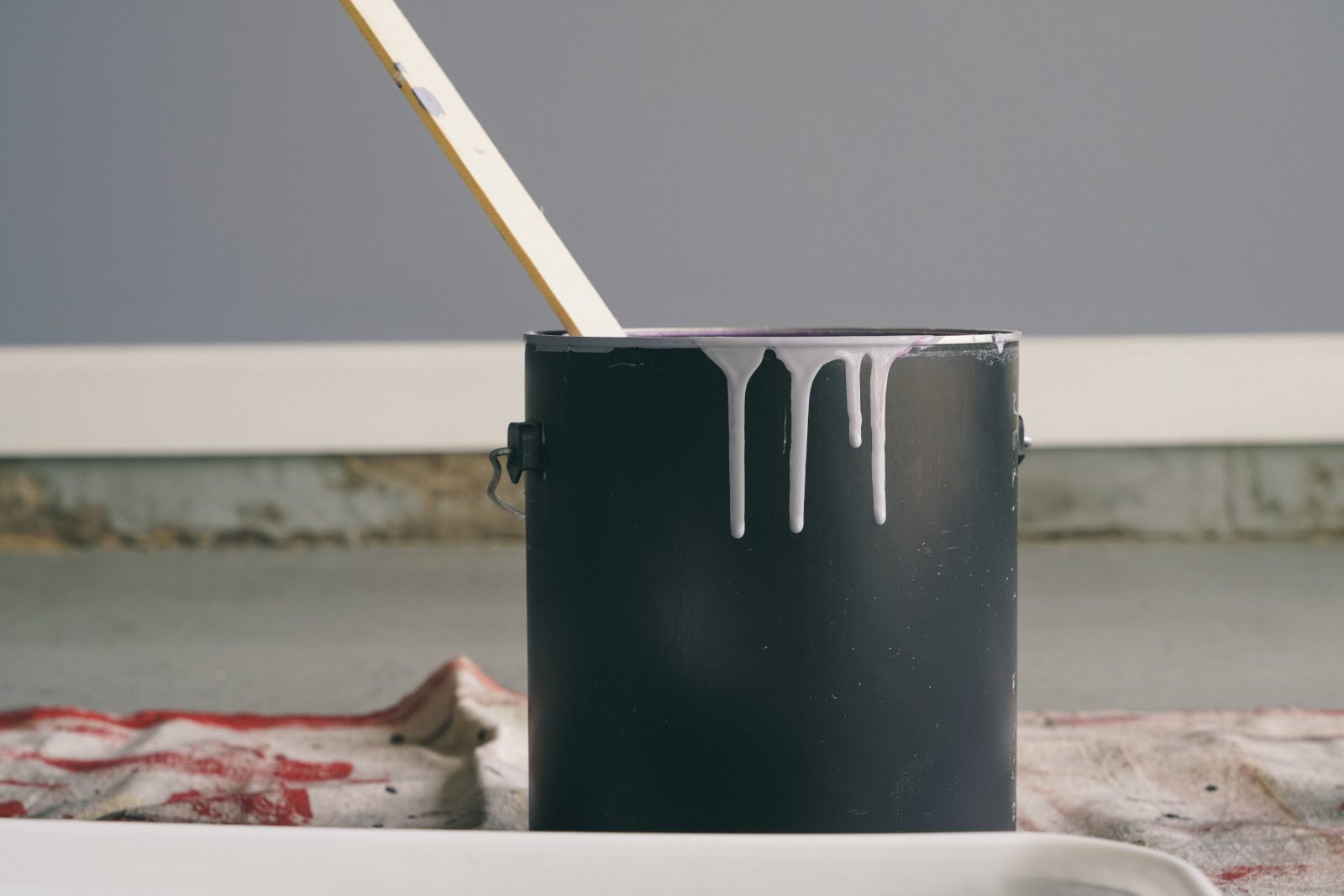
Many of us keep leftover paint in our homes for further touch-ups. And it’s a great ecological habit! But ironically when the time comes, we often dread using it for fear that it will no longer be usable.
Rust, strange texture, unusual smell, odd colour … there are many reasons that make us doubt the quality of our stored paint. Sometimes, we must actually get rid of it, but not in all cases! To find out if your leftover paint is usable, here are some steps to follow.
Step 1: Shake Before Opening
Whether the paint has been stored in the garage, in the basement or in a closet, the first thing to do is to shake the container in order to mix the product. After all this time in storage, the components of the paint have probably separated. It is therefore necessary to stir vigorously, ideally for a minute (a little bit of biceps never hurt anybody). This step must be done before opening the can in order to avoid the deterioration of the paint.
Step 2: Once Opened, Mix With a Stick
Now is the time to open your gallon. If there is no layer of thickened skin, gently stir the paint with a wooden stick until the product is uniform. If you notice lumps that do not dissolve, your paint is unfortunately not usable.
Step 3: What to do if a layer of thickened skin has formed on top
Did you notice a layer of thickened skin on the surface of your paint ? Do not panic! This film can sometimes be removed without consequence. Gently, using a tool of your choice such as a stick, remove the skin. Try to keep it intact to prevent it from breaking and mixing with the rest of the paint. If you have succeeded, go on to step4. Otherwise, you can purchase a paint filter (available at most MF Paints retailers) to remove the lumps.
Step 4: Rust ? Not always a problem!
Many people tend to get rid of containers contaminated with rust. However, this corrosion is harmless if it is not in contact with the paint. Rust on a container only indicates that it was not kept in a sufficiently dry environment. Nowadays, water-based paint is stored in plastic containers, which means fewer chances of rusting.
If there are no signs of corrosion in the paint, you can get to work. If rust is in direct contact with your paint, bring it to a drop-off point for recycling.
Step 5: Smell Your Paint
Focus on the smell. If the smell is off, it is a sign that the paint has been contaminated and that you can no longer use it. We agree, for some, this step can be a challenge! Sometimes because their sense of smell is not developed or even because to them, the smell of paint is always unpleasant. If you recognize yourself among these statements, ask for a second opinion!
In conclusion, get rid of your paint if:
- The smell is off
- It contains shady lumps
- It has been contaminated with rust (you can use it if corrosion is only on the container).
- You were unable to remove the thickened skin
… If not, you can take out your brushes!